Kepulauan Socotra di Yaman yang dikenali juga sebagai 'The Roof of Arabia'. Yang sangat menarik ialah flora dan fauna serta landscape yang tak pernah kita tengok di tv atau pun media cetak sebelum ini. Kepulauan Socotra baru saja di calonkan sebagai 'one of the new seven wonders of the word'. UNESCO pula mengiktiraf Socotra Island sebagai 'world heritage site' baru-baru ini.
Pulau Socotra yang terletak kira-kira 210 meter di luar Semenanjung Arab. Socotra merupakan DUNIA ASING � bagi penduduk Yaman sendiri. Penduduk di situ menggunakan bahasa mereka yang tersendiri iaitu bahasa Soqotri. Hanya akhir-akhir ini, pulau ini boleh dikunjungi dengan bot tetapi tetap terpisah dari dunia luar apabila musim monsun tiba dari bulan Jun hingga September.
Pulau terpencil ini hanya didiami sekitar 40.000 orang. Nama Socotra itu sendiri diambil dari bahasa Sansekerta yang artinya “Pulau Kebahagiaan”. Banyak pohon dan tumbuhan di pulau ini termasuk dalam kategori flora endemis, yang artinya tidak ditemui di tempat lain di dunia selain di pulau Socotra. Bahkan ada beberapa varieti yang diprediksikan telah mencapai usia 20 juta tahun.

Anehnya, walaupun Pulau Socotra mempunyai keistimewaan yang tidak terdapat di lain tempat, ia bukanlah satu lokasi tarikan pelancung. :
- Pulau Socotra adalah pulau yang memiliki iklim tropika padang pasir. Panasnya mencapai sehingga 40 darjaht celcius.
- Pulau Socotra adalah pulau yang dilindungi keasliannya, di sana hampir tidak dibangunkan jalan raya. Satu-satunya jalan yang ada di sana, hanya dibina kira-kira 2 tahun yang lalu melalui antara Pemerintah Yaman dan UNESCO.
- Tidak banyak usaha dilakukan ubtuk menarik pelancung ke Pulau Socotra agar keaslian pulau Socotra terpelihara. Tiada kemudahan disediakan termasuk hotel atau tempat ristirahat di sana.
 |
Seakan Pokok Bonzai |

 |
| Dragon Blood |
Lebih aneh apabila ada
masyarakat yang mengaitkannya dengan penjara Dajjal. Pulau socotra,
pulau terpelik didunia,. mempunyai spesis tumbuhan yang amat pelik,
seperti dragon blood tree, atau pokok darah naga, getahnya berwarna
merah. pokok 'Dragon Blood Tree'.
Dalam bahasa tempatan Dam al-Akhawain bermaksud..'blood of the two
brothers'. Pokok ini beharga kerana getah nya yang berwarna merah
digunakan sebagai pembuatan ubat dan kosmetik. Pokok nya begitu cantik
dan unik.Pokok Daragon's Blood ini ialah salah satu diantara 900 spesis
pokok yang sangat pelik dan popular di pulau Socotra. Bila ke sini
seperti pergi ke planet alien, teori sebahagian pengalisa menyatakan
pulau ini mungkin tempat dajjal di kurung
Tidak dapat dipastikan kebenarannya kerana ia termasuk dalam kretria berita ghaib dan hanya berpandukan salah satu hadis yang menyebut tempat Dajjal dikurung ialah Laut Yaman. Wallahu a'lam.

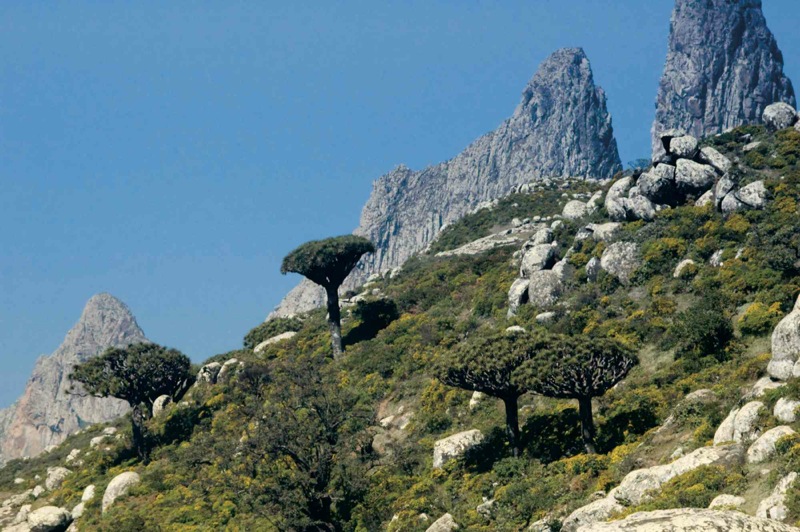 .
.



Sejarah pulau Socotra
Nama socotra berasal dari bahasa sansekerta, 'sukhadhara dvipa' yang berarti "pulau kebahagiaan". Menurut sejarah, penduduk pulau socotra telah memeluk Kristen sejak tahun 52 setelah masehi. Pada abad 10, seorang ahli geografi Arab yang bernama Abu Muhammad Al-Hassan Al-Hamdani menyatakan bahwa pada masanya, penduduk Socotra majoriti memeluk agama Kristen. Konon mereka juga telah mempraktikkan ritual sihir kuno.
Pada tahun 1507, armada Portugis mendarat di pulau ini. Tujuan mereka adalah untuk menghentikan perdagangan Arab dari Laut Merah ke Samudra Hindi serta untuk menghapuskan aturan-aturan Islam dalam perdagangan tersebut. Namun, invasi Portugis ini tidak berjaya karena penduduk setempat menentang mereka. Pada tahun 1511, pulau ini dikuasai oleh Kesultanan Mahra. 456 tahun kemudian, tepatnya pada tanggal 30 November 1967, Pulau Socotra menjadi bagian dari Republik Rakyat Yaman Selatan yang pada saat ini telah berubah menjadi Republik Yaman.
Geografi dan Iklim
Pulau Socotra termasuk tempat yang paling terpencil di dunia. Sebenarnya Socotra merupakan sebuah kepulauan. Pulau Socotra sendiri merupakan pulau utama, sedang 3 pulau kecil lainnya bernama pulau Abd Al Kuri, Pulau Samhah,dan Pulau Darsa. Puncak tertinggi di Pulau Socotra adalah pegunungan Haghier dengan ketinggian 1500m dari permukaan laut. Iklim di pulau ini diklasifikasikan sebagai iklim koppen dengan suhu tahunan rata-rata diatas 18 derajat Celcius.
Flora dan Fauna
Inilah yang membuat pulau ini begitu terkenal akan keeksotisannya, sekaligus menjadi misteri tersendiri. Karakteristik iklim dan geologi pulau ini yang unik menjadikan flora-flora yang tumbuh di pulau ini unik. Bahkan floranya termasuk tumbuhan endemik, jadi tumbuhan tersebut hanya ada di pulau Socotra. Ada pula beberapa tumbuhan yang terancam hidup di pulau ini. Flora dengan bentuk aneh sepertipohon Darah Naga (Dracanea Cinnabari) menjadi ikon khas pulau ini. Konon getah pohon ini digunakan penduduknya sebagai ubat dari segala penyakit. Flora unik lainnya adalah tanaman raksasa Dorstenia, Dendrosicyos, pohon Delima Socotra yang langka (punica protopunica).
Pohon Darah Naga
Naga berdarah-darah
Dorstenia Socotra
Disisi fauna, pulau ini juga memiliki spesies burung endemik seperti Socotra Starling Onychognathus Frater, Socotra Sunbird Nectarinia Balfouri, Socotra Sparrow Passer Insularis,dan Grosbeak Socotra Rhynchostruthus Socotranus. Ada juga Burung Penyanyi Socotra, incana incana. Kelelawar adalah satu-satunya mamalia asli pulau Socotra. Pulau ini juga memiliki spesies endemik terumbu karang. Akan tetapi hewan-hewan yang dibawa oleh manusia seperti ayam, kambing, sapi, dll dikhawatirkan akan merusak flora-flora asli pulau tersebut di masa depan.
Socotra Starling Onychognathus Frater
Socotra Sunbird Nectarinia Balfouri
Pengakuan Oleh UNESCO
Pulau ini diakui UNESCO sebagai satu warisan alam dunia pada Julai 2008. Perlindungan keterlaluan terhadap pulau ini hingga tidak dibangun fasiliti bagi pengunjung seperti hotel, restoran, dan bangunan lainnya meski pulau ini memiliki potensi sebagai tempat bercuti yang luar biasa.
Hal Lain Mengenai Pulau Ini
Bahasa asli penduduk di pulau ini adalah Bahasa Semit Soqotri yang hanya diucapkan di pulau Socotra. Terlepas dari keindahan alam Pulau Socotra, banyak ilmuwan yang tertarik dan meneliti pulau yang memiliki flora dan fauna yang boleh saya katakan "lain dari yang lain" . Sebahagian ilmuwan berpendapat flora dan fauna di pulau ini merupakan spesies yang hidup di masa lampau dan belum pernah diidentifikasi sebelumnya. Karena letak pulau yang terasing dari dunia luar dan karakteristik iklimnya yang unik, flora dan fauna ini masih bertahan hidup hingga saat ini. Demikianlah sekilas mengenai Pulau Socotra,dengan segala keunikan dan keindahan alamnya, tidak hairan jika UNESCO dan pemerintah Yaman bermati-matian mempertahankan keaslian pulau ini.
baca selengkapnya disini Fenomena Pulau Socotra | The Noock
http://noock.blogspot.com
Semuanya hak milik Allah, dan hanya Dia sahaja yang benar-benar tahu setiap ciptaanNya.
......
/maklumat tambahan
Getting around can be a challenge, as there are almost no roads. Despite the fact that this island has around 40,000 inhabitants, the Yemeni government put in the first roads just 2 years ago - after negotiations with UNESCO, which has declared this island a World Natural Heritage Site. I would prefer a camel ride to what is bound to be a bumpy and slow 4x4 ride... It is a quiet and peaceful enclave in an otherwise troubled world. If you decide to visit there, you can forget about beachfront hotels and restaurants; this island is geared towards eco-tourism and sustaining the local economy and way of life.
This island is a birder's paradise as well, with 140 different species of birds, 10 of which are not found anywhere else in the world. A unique Socotra warbler, sunbird, starling, bunting, sparrow, and cisticola are among the ones found here. There are also Socotra Cormorants:
Want to see some fairy-tale (and possibly haunted) shipwrecks? There are diving tours available... Hopefully some IMAX crew will film it in all its glory one day.
To give you a glimpse of Socotra's and Yemen's in general totally unique architecture, check out this place located on the mainland: Al Hajarah, Yemen - Walled city in the mist
Socotra is one of those "lost world" islands (separated from the world six million years ago) where intrepid travellers - particularly those seeking exotic nature and wildlife in a remote tropical setting - can go days on end without rubbing shoulders with that less-than-endangered species: tourists. Known for decades as theGalapagos of the Indian Ocean, it's the world's tenth richest island for endemic plant species. And it's the biggest island in the Middle East…125 km in length and 45 km across. Meanwhile, the landscape is one of contrasts; for example, it has isolated nature preserves with dazzling wildlife, including 900 species of plants, the famous Dragon's Blood Tree "dracaena cinnabara," some of the rarest birds that exist nowhere else in the world, and picturesque sandy beaches.
The Socotra Archipelago lies 380 km to the south of Ras Fartak on the Arabian Sea coast of Yemen. It includes a group of islands – Socotra, Darsa, Samha and Abd Al Kuri. The western-most point of the Archipelago is just 80 km east of Cape Guardafui on the Somalia Peninsula.
With a total land area of 3625 m2, Socotra is the largest of four islands. The eastern and central parts of the island are dominated by high mountain ranges with 1,570 m peaks and valleys providing green refreshing oases, sometimes hidden.
Photos of Socotra...
Home to unique species
Long ago the Socotra Islands were a part of Africa and Arabia, now separated by the Gulf of Aden. Its long isolation period lasted for at least 20 million years favored evolution and origination of new species.
The Islands are a home to a great number of endemic species. All the land mollusks, 90% of the reptiles and a third of the plants can be only met in this area. Its population of endemic bird species is the biggest on the Middle East.
Owing to location at the northwest part of the Indian Ocean, east of the entrance to the Red Sea, the Islands are inhabited by exceptionally great variety of fish, corals and other invertebrates carried here by major ocean currents from nearby and far away seas.
Unique people
The
Socotrans are cheerful and self-sufficient people with optimistic
attitude to life in spite of severe living conditions. They speak a
unique classical Semitic preliterate language, Socotri, that is very
different from modern Arabic.
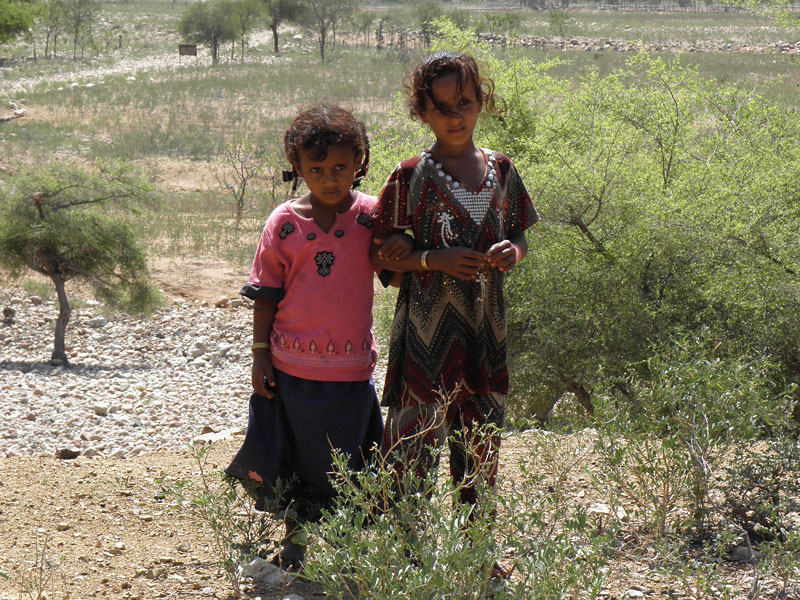
Isolated by seasonally bad
weather and a lack of regular transport until recent years, the
inhabitants of the Socotra Islands have not had practically influence
from the modern world. Therefore, for survival the Socotra people have
developed deep respect and understanding of their land and sea.
The Socotra Islands have global significance because of their evolutionary uniqueness, biological diversity and socio-cultural heritage. The Republic of Yemen with support of the United Nations and an alliance of governments implements a number of conservation and sustainable development programs, one of which is the Socotra Conservation Zoning Plan approved by the President of Yemen in 2002.The islands were recognized by the United Nations Educational, Scientific and Cultural Organization (UNESCO) as a world natural heritage site in July 2008. The European Union has supported such a move, calling on both UNESCO and International Organisation of Protecting Environment to classify the island archipelago among the environmental heritages.[1]
Tourism on Socotra; Socotrian Guides
Tourism on Socotra is at its early stage of development. Every year the island is visited by not more than 2000 tourists on average, which is still environmentally friendly for the present.
Socotra is a rather small island. It attracts people as a solitary place with rich landscapes not spoiled by the world progress. We do hope that at least in the near future Socotra will not lose its attractiveness because of its increasing popularity among tourists. However, we have to state that today already many popular camping sites have been spoiled by the tourist flow.
Socotra turns into a well-known and loved place. But you have to get clear understanding of the island visiting format, its living and food conditions before coming here.
We have pleasure to offer our guide services to those who want not only to take a rest on Socotra, but also to remember it as a Dream Island.
We arrange tours on Socotra in cooperation with the local guides having many years' experience with tourists from various countries. They are highly professional and can show you the most attractive places of island, tell about its nature, language and culture, as well as organize diving, trekking or special programs.
We can help you to book a standard tour with food and overnight accommodation in Hadiboh hotels (3-4*) and at camping sites with toilet and shower rooms.
Our individual and group tours are developed to show you a great many interesting places that are not included in usual tourist programs and, that is why, have preserved their absolute purity. We take care of you during the whole trip with paying special attention to food arrangements.
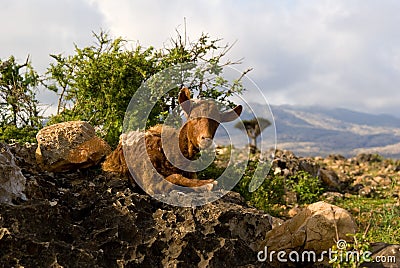
more picture KLICK
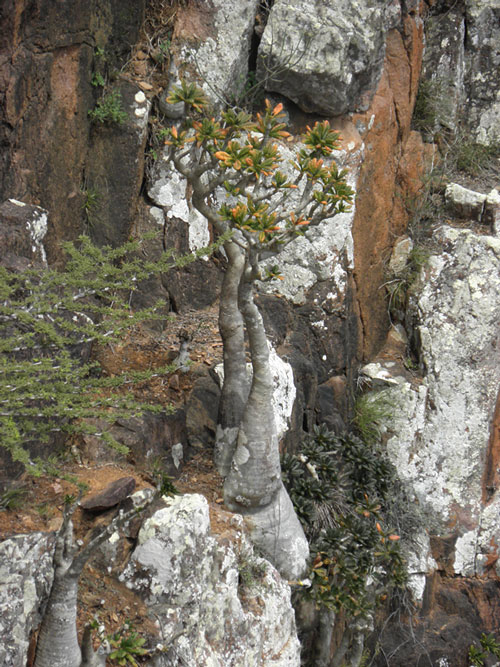
Sumber : abatasa ii


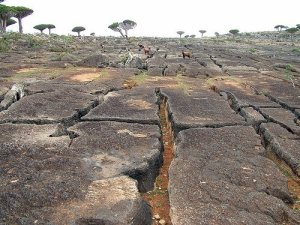























interesting...
ReplyDelete